Camino camping
The Camino de Santiago (also known as the Way of Saint James) is a network of well-trodden and ancient pilgrimage routes stretching across Europe and meeting up at the lovely historic Santiago de Compostela in northern Spain. The city’s massive medieval cathedral has been the ultimate goal of pilgrims for hundreds of years, as it is reputed to be the resting place of the relics of Saint James (Santiago), one of the 12 Apostles.
More than 300,000 international pilgrims follow the famous yellow arrow and scallop-shell signs along the Camino trails each year, and it can take up to five weeks to complete the whole 800-kilometre (500-mile) route, with many people camping along the way. Some complete the Camino for spiritual or religious reasons, while others wish to challenge themselves on some of the most remote hiking routes in Europe, as well as make new friends and see new places.
Whatever your reason for following the Camino, read on for Pitchup’s top tips for having a successful camping trip.
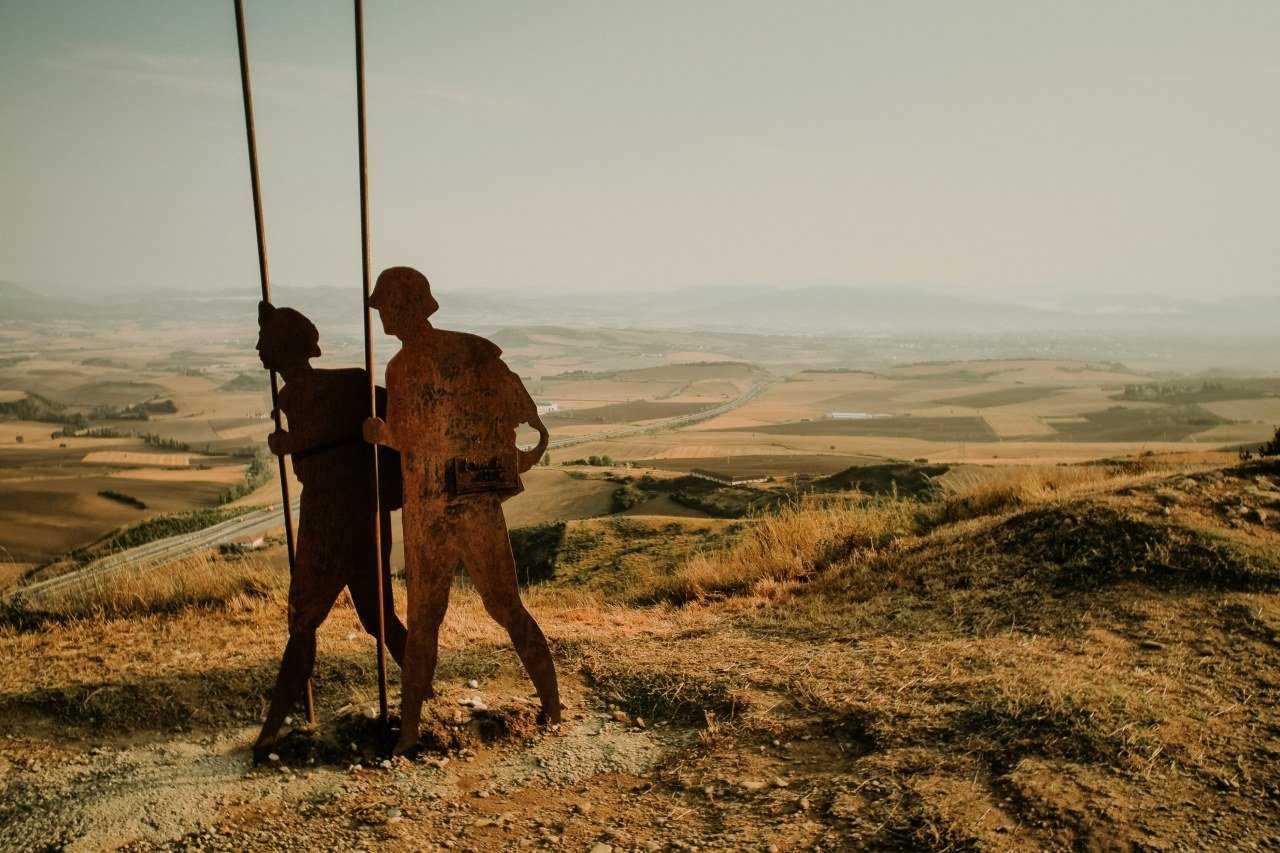
What are the accommodation options on the Camino?
Pilgrim hostels on the Camino
A system of cheap pilgrim hostels (called albergues in Spanish) feature dormitory-style accommodation along the various Camino routes. They cost around €5-20 per night and often have kitchens where you can prepare food, as well as simple amenities like washing machines and dryers.
Pilgrimage hostels come in all shapes and sizes, but they all share one thing – early morning starts. As a general rule, you’ll be expected to be on your way by 7am, with many hostels locking their doors by 8am.
Private hotels
If your budget allows, most Camino routes have lots of hotels and guesthouses, which are more comfortable (many have private bathrooms for example) than the albergues, but work out more expensive, especially if you are travelling for several weeks. It’s cheaper to stay in a hotel or guesthouse if there are two of you walking together as you can share a double room – and sometimes it’s great to have a little bit of luxury or respite from the communal living in the albergues.
Camping on the Camino
Camping is possible on all of the Camino’s routes, but here organisation is key as designated campsites are few and far between. Some hostel owners will let pilgrims camp in their gardens for a small donation, and there are frequent grassy rest areas with basic facilities where hikers can wild camp.
However, wild camping in Spain, France and Portugal is something of a grey area; while it is possible along some parts of the Camino, much of the route passes through private or state-owned property, military areas, beaches or natural parks where it is not allowed. If you’re exploring this option, stay in the locals’ good books – and on the right side of the local law – by reading Pitchup’s guide to wild camping in Europe.
As official campsites are so few in number, pilgrims should pre-book their accommodation – certainly a must when the Camino is at its busiest during Holy Years and in the summer months. The widest choice of campsites are found on coastal routes like the Camino Portugués (The Portuguese Way) and the Camino del Norte (The Northern Way).
Hikers who opt to camp can set their own itineraries without worrying about being woken up at dawn in a hostel. When camping independently, you can take a day of rest or stay around exploring the local area. It’s easy to change your plans – whether you’re drawn to a break in Porto (where the pilgrim route starts at Sé Cathedral) or fancy a weekend in the Basque Country.
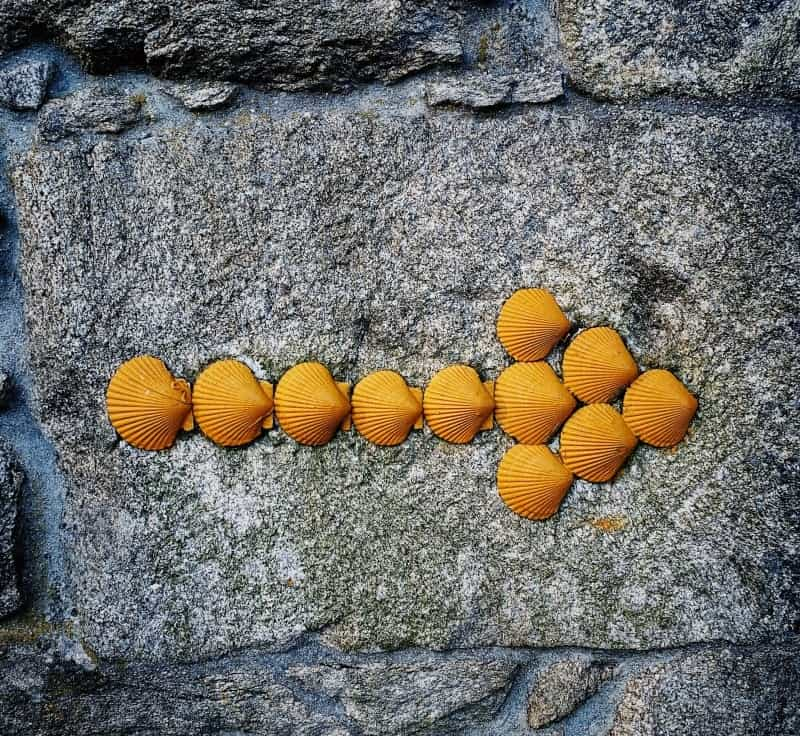
What’s the best time to travel on the Camino?
Strictly speaking, all the Camino routes are passable throughout the year, but trails over the Pyrenees Mountains see deep snow in winter, and most of the albergues and campsites close. Temperatures ramp up in mid-summer and it’s holiday time so the trails can get really busy – always book your camping accommodation well ahead of time. April, May, June, September and October are the best months for hiking the trails, as the weather is not too extreme and the routes are generally quieter.
What is the Camino Pilgrim Passport?
The Camino Pilgrim Passport (Credencial del Peregrino in Spanish) is an official document that confirms hikers as having walked one of the Camino routes. You can also use it as a souvenir to record your own journey.
An important point here: if you are travelling on the Camino independently, you will need a Pilgrim Passport to access the albergues, but not the campsites.
You will also need the Pilgrim Passport to present as proof if you are intending to claim a certificate at the end of your journey.
A Camino Pilgrim Passport has 16 pages, with space for personal details, basic instructions, several pages for collecting stamps and a page with a pilgrim prayer.
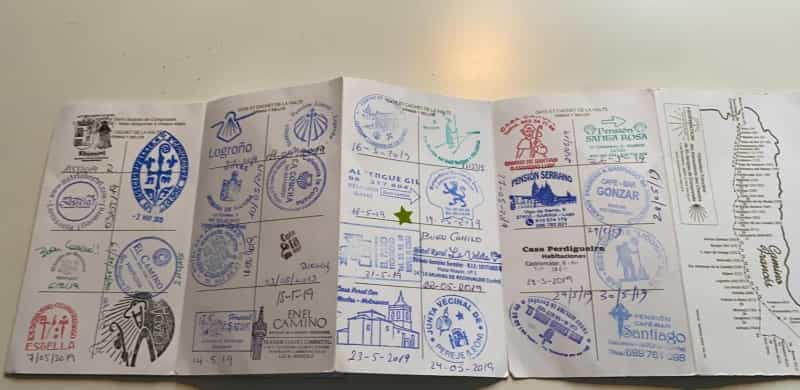
How does the Camino Pilgrim Passport work?
Stamps (sellos in Spanish) in your Camino Pilgrim Passport (Credencial del Peregrino in Spanish) are the proof that you have walked the 100 kilometres (62 miles) needed to qualify for your Camino Compostela (for pilgrims) or Camino Certificate (secular), two of the official documents recording your journey.
Without this passport, you will not be able to enter the albergues along the way.
You can get stamps in your passport from hotels, albergues, churches, town halls, post offices and bars and restaurants along your route. Watch out for signposts with the distinctive Camino 'shell' logo on them pointing to places where you can get your passport stamped.
You can get the Pilgrim Passport from the following:
-
The St James Society
-
Venues and churches along the Camino
-
The Camino Forum
In 2021 a new Digital Pilgrim Passport was introduced. This app can be downloaded to your phone so you can digitally scan QR codes to get stamps along the way.
You will need to collect one stamp per day. When you arrive in Santiago de Compostela, show your stamped Camino Pilgrim Passport at the Pilgrim’s Reception Office to apply for your Camino Compostela certificates.
The Camino routes
Most sections of the Camino de Santiago are easy to follow, as they are marked with signs bearing the iconic yellow scallop shell. Hikers must complete at least 100 kilometres (62 miles) to receive an official certificate of completion from the Pilgrim’s Office in Santiago de Compostela.
The Camino Portugués
The Camino Portugués is the only official pilgrim route that starts in Portugal, and also the easiest route, following relatively flat but still inspiring terrain from Lisbon to Porto and into Spain.
Starting from Lisbon, this Camino route stretches to nearly 645 kilometres (400 miles) – but the Lisbon section has a lot of road and motorway walking. Many people start their trek in Porto and hike north along the gorgeous rugged Atlantic coastline and into hilly northern Spain. Another traditional set-off point is Baiona, a Galician seaside town 120 kilometres (75 miles) from Santiago de Compostela.
See all Pitchup campsites around Porto
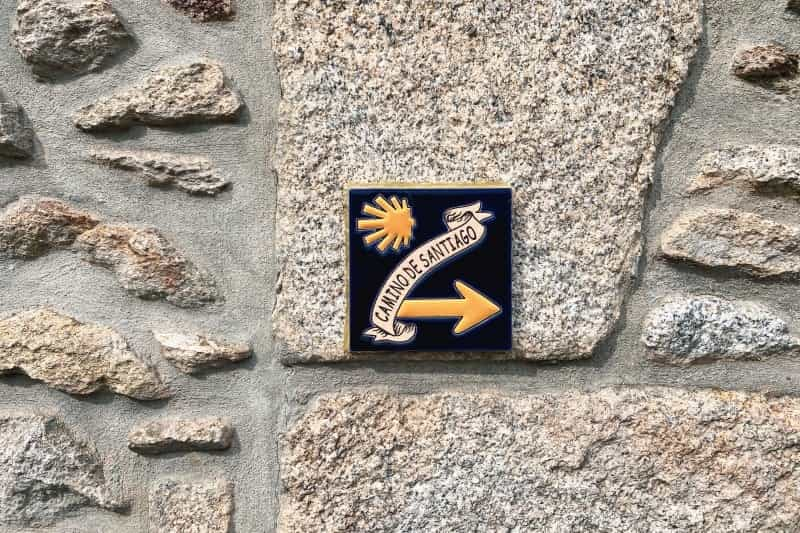
Camino del Norte
Following the lush northern coast of Spain, the Camino del Norte starts off in the city of Irún and heads through Bilbao, Santander and Oviedo on its way to Santiago. It’s one of the prettiest routes, with sections following dramatic cliff paths, heading along rugged mountain trails and passing through picture-perfect fishing villages.
Being 805 kilometres (500 miles) in length and taking in mountain ranges, this is a trek for expert hikers, and normally takes up to 35 days to complete.
See all Pitchup campsites around Bilbao
Camino Inglés
The shortest Camino route, the Camino Inglés can either be started in La Coruña or Ferrol, in Spain’s north-west region of Galicia. The hike from La Coruña is only 75 kilometres (46 miles) so it will not earn you a Compostela certificate.
The Ferrol option, however, covers 110 kilometres (70 miles) and can usually be completed in five days.
See all Pitchup campsites in Galicia
Camino Primitivo
An adjunct to the Camino Francés, the Camino Primitivo is a detour for pilgrims wanting to visit the splendid Gothic cathedral at Oviedo, and it reconnects with the Camino Francés around 65 kilometres (40 miles) from Santiago. It is a hard 320-kilometre (200-mile) walk through the mountainous region of Asturias, and the weather can be unpredictable, even in summer.
See all Pitchup campsites in Asturias
Via de la Plata
The longest hike, following an old Roman road for 1,000 kilometres (620 miles) heading north from Seville to Santiago de Compostela. The route takes in Mérida and Salamanca, as well as other lovely Spanish cities rich in Roman and Moorish architecture.
See all Pitchup campsites around Seville
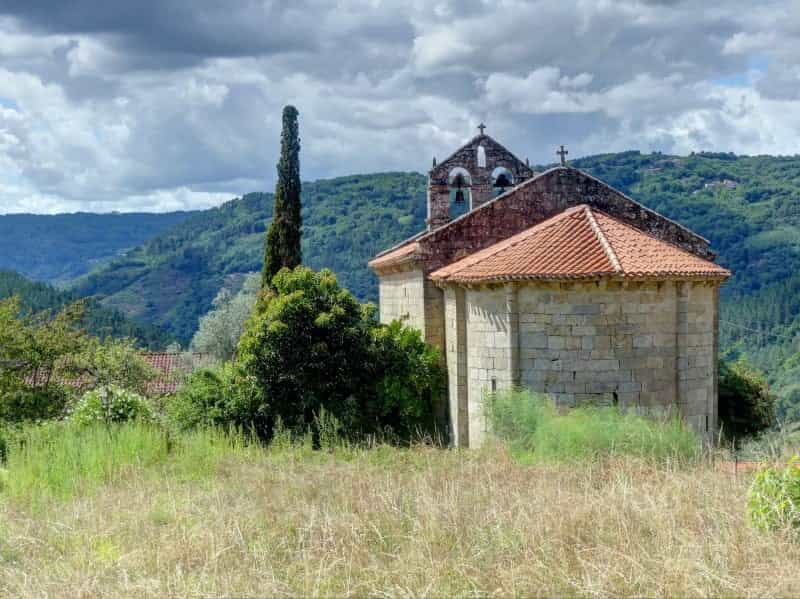
The Camino Francés
The Camino Francés is the route that most hikers choose. It starts off in Saint-Jean-Pied-de-Port in the Pyrenees in France’s Aquitaine region, and it crosses dramatic mountains and plains as it wends its way towards Santiago de Compostela. It’s the best-established route with plenty of albergues and places to eat.
Covering nearly 805 kilometres (500 miles), the Camino Francés normally takes around 30 days to complete. It gets busy in summer, so you'll need to book accommodation ahead of time.
If you don't have time to complete the full route, try starting in Sarria and walking the final 100 kilometres (62 miles). This more manageable route opens up attractive rural scenery, and you’ll still get the chance to earn a Compostela certificate.
See all Pitchup sites in Aquitaine
Camino Finisterre-Muxía
Some pilgrims choose to continue their walk after reaching Santiago de Compostela. An extra 90 kilometres (55 miles) brings you to the rocky peninsula of Finisterre, where you can be awarded another Compostela certificate.
See all Pitchup campsites around Finisterre
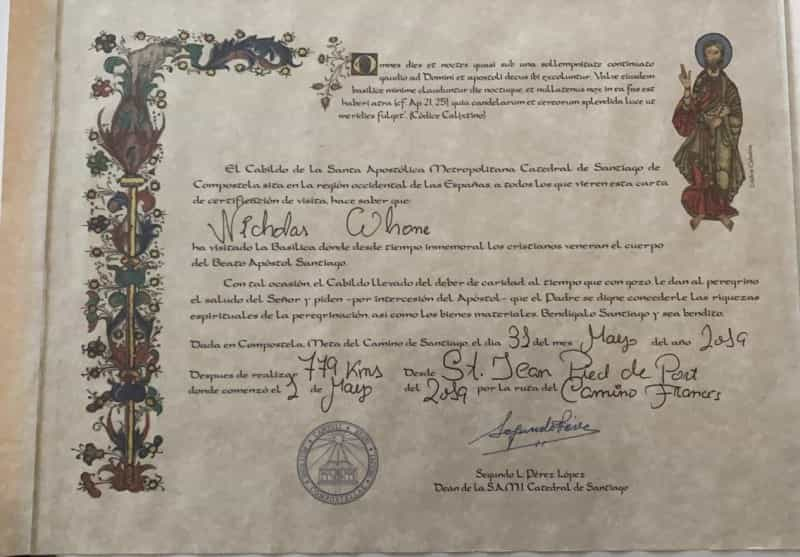
What to pack for the Camino
A pair of very stout walking boots that fit well (wear them in before you leave home) is an absolute necessity, along with thick hiking socks. You’ll need comfortable underwear and lots of layers of clothing, from T-shirts to fleeces, to cope with the differences in temperature from day to day. Carry a lightweight backpack with lots of pockets for water, food, phones and cameras – basically whatever you need to get through the day. Many people also take a diary to record their journeys.
How much weight do you want to carry in that backpack when hiking the Camino? Are you going to carry everything with you? If you’re prepared to spend a little extra per day, every route now has several reputable companies that will forward your gear to your next overnight stop.
You don’t have to do this, of course. Use our filters when booking if you want to ditch the tent altogether and go for pre-erected tents – a great way of cutting down on excess weight.
Whether you take on the Camino backpacker-style or let a transfer company do the heavy carrying for you, have a read of our ultimate camping checklist to make sure you’re fully equipped before setting off.
Is it safe to walk the Camino alone?
If you follow popular Camino routes during the summer, you’ll be virtually guaranteed to meet people to walk with. It is generally safe for women on their own, so as long as you are careful and take some sensible precautions, all should be well. Be aware of your surroundings and try to stay close to other walkers. Carry a whistle for any unlikely emergencies – three sharp blasts is a universal distress symbol.
Carry a mobile phone, switch on your location sharing, and use the What3words app should you need anyone to find you. Tell someone where you are and where you intend to be that night. Follow the rules for any solo camping trip, and hopefully your Camino experience will be problem-free.